#based on novel by jean cocteau
Text
THIS DAY IN GAY HISTORY
based on: The White Crane Institute's 'Gay Wisdom', Gay Birthdays, Gay For Today, Famous GLBT, glbt-Gay Encylopedia, Today in Gay History, Wikipedia, and more … April 11



1780 – William Smith and Theodosius Reed are pilloried in England for attempted sodomy. They are attacked by a crowd throwing objects, killing Smith. The London Morning Post endorsed the crowd's actions.


1901 – The Wisconsin author Glenway Wescott, was born on this date (d.1987). A major American novelist during the 1920-1940 period and a figure in the American expatriate literary community in Paris during the 1920s Wescott was the model for the character Robert Prentiss in Ernest Hemingway's The Sun Also Rises.
He produced a series of best-selling, highly regarded novels, notably The Grandmothers (1927), The Pilgrim Hawk (1940) and Apartment In Athens (1945), although he didn't complete a novel after the age of forty-five. He was equally well known as an arts impressario and for the company he kept.
Wescott is a linking figure at the heart of the American literary scene in the middle of the 20th century. As a young writer in 1920s Paris, he associated with Hemingway, Gertrude Stein and F. Scott Fitzgerald. On his return to the States he was a central figure in New York's artistic and gay communities - W. H. Auden, Christopher Isherwood, Somerset Maugham, E. M. Forster, Jean Cocteau, Ford Madox Ford, Thornton Wilder, and many others were among his acquaintance.
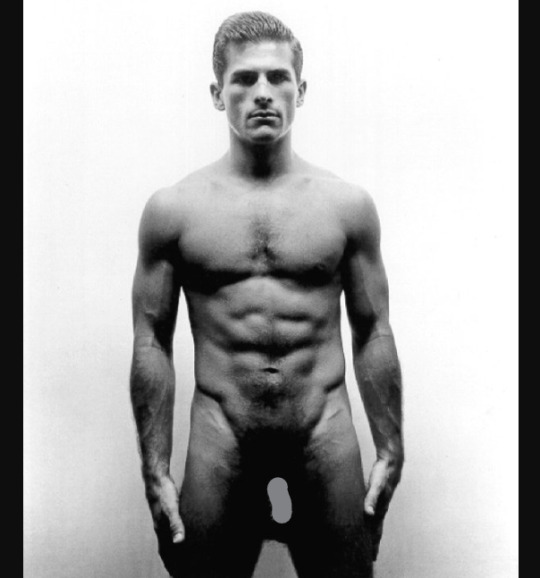
Wescott by Lynes
Although only some of his work hints at his sexuality, he wrote a private journal from 1937 until the 1950s, focusing on his private life and relationships with fellow gay artists including lifelong partner Monroe Wheeler, photographer George Platt Lynes and Paul Cadmus – this was published in 1990 as Continual Lessons. His relationship with Monroe Wheeler lasted from 1919 until Wescott's death.
There was a Paul Cadmus painting that hung in his house. In it, three men, clearly arranged in a triangle, are sitting on a picnic blanket. The men are George Platt Lynes, Monroe Wheeler and Wescott himself. The picture below may be that painting:


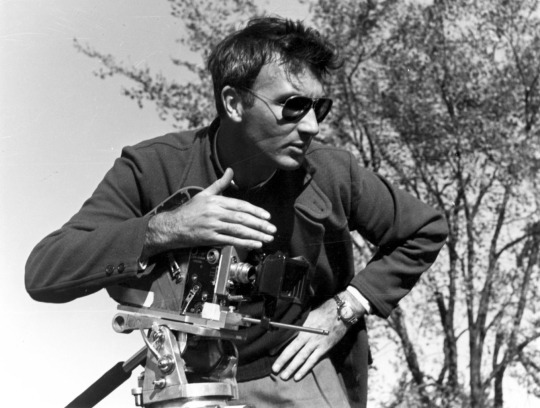
1914 – Norman McLaren (d.1987) was a Scottish-born Canadian animator and film director known for his work for the National Film Board of Canada (NFB). He was a pioneer in a number of areas of animation and filmmaking, including drawn on film animation, visual music, abstract film, pixilation and graphical sound.
His awards included an Oscar for the Best Documentary in 1952 for Neighbours, a Silver Bear for best short documentary at the 1956 Berlin International Film Festival Rythmetic and a 1969 BAFTA Award for Best Animated Film for Pas de deux.
McLaren was born in Stirling, Scotland and studied set design at the Glasgow School of Art. His early experiments with film and animation included actually scratching and painting the film stock itself, as he did not have ready access to a camera. His earliest extant film, Seven Till Five (1933), a "day in the life of an art school" was influenced by Eisenstein and displays a strongly formalist attitude.
McLaren's next film, Camera Makes Whoopee (1935), was a more elaborate take on the themes explored in Seven Till Five, inspired by his acquisition of a Ciné-Kodak camera, which enabled him to execute a number of 'trick' shots. McLaren used pixilation effects, superimpositions and animation not only to display the staging of an art school ball, but also to tap into the aesthetic sensations supposedly produced by this event.
His two early films won prizes at the Scottish Amateur Film Festival, where fellow Scot and future NFB founder John Grierson was a judge. Grierson, who was at that time head of the British General Post Office film unit, saw another of his movies at an amateur film festival and took interest. He hired Mclaren for the GPO as soon as he completed his studies.
After making four films for the GPO in London, including Love on the Wing, McLaren moved to New York City in 1939, just as World War II was about to begin in Europe. He worked as a freelancer until 1941.
At the invitation of Grierson, he moved to Canada in 1941 to work for the National Film Board, to open an animation studio and to train Canadian animators. During his work for the NFB, McLaren created his most famous film, Neighbours (1952), which has won various awards around the world, including the Canadian Film Award and the Academy Award. Besides the brilliant combination of visuals and sound, the film has a very strong social message against violence and war. If you have never seen this brilliant 8 minute film, take the time to watch it below:
Not many Canadians realize that Neighbours garnered its Academy Award in the documentary category, or that McLaren's film was cut and expurgated in classrooms in many countries because of its resolute depiction of violence between two next-door families. The irony is that McLaren was the most gentle of figures, whose experiences filming the brutal fighting during the Spanish Civil War turned him into a lifelong pacifist.
In his early period in Canada, McLaren spent considerable time developing the animation department of the board. McLaren's presence at NFB inspired younger generations of animators, notably Oscar-winning producer, writer and director Derek Lamb, director Kaj Pindal and, perhaps most notably, the tragic, driven talent of Ryan Larkin. Also among his pupils are numbered James McKay of Toronto and George Dunning who designed the animation for the Beatles' film Yellow Submarine.
McLaren was gay, and his longtime companion was NFB director Guy Glover, whom he met at the ballet in London in 1937. The two were together until McLaren's death in 1987.


1932 – Joel Grey (born Joel David Katz) is an American actor, singer, dancer, and photographer. He is best known for portraying the Master of Ceremonies in both the stage and film versions of the Kander & Ebb musical Cabaret. He has won the Academy Award, Tony Award, and Golden Globe Award. He also originated the role of George M. Cohan in the musical George M! in 1973, and the Wizard of Oz in the musical Wicked. He also starred as Moonface Martin in the Broadway revivals of Anything Goes, and as Amos Hart in Chicago.
Grey was born in Cleveland, Ohio, the son of Goldie "Grace" (née Epstein) and Mickey Katz, a Jewish actor, comedian, and musician. He started his career in the Cleveland Play House's Curtain Pullers children's theatre program in the early 1940s, appearing in productions such as Grandmother Slyboots, Jack of Tarts and a lead role in the their mainstage production of On Borrowed Time.
Grey won an Academy Award for Best Supporting Actor in March 1973 for his performance as the Master of Ceremonies in the 1972 film version of Cabaret. His victory was part of a Cabaret near-sweep, which saw Liza Minnelli win Best Actress and Bob Fosse win Best Director.
In 1958, Grey married Jo Wilder; they divorced in 1982. Together, they had two children: actor Jennifer and chef James. He is also a photographer; his first book of photographs, Pictures I Had to Take, was published in 2003; its follow-up, Looking Hard at Unexpected Things, was published in 2006. His third book, 1.3 – Images from My Phone, a book of photographs taken with his camera phone, was published in 2009. An exhibit of his work was held in April 2011 at the Museum of the City of New York, titled "Joel Grey/A New York Life."
In January 2015, Grey opened up about his sexuality in an interview with People, stating: "I don't like labels, but if you have to put a label on it, I'm a gay man."


1955 – The American singer songwriter Michael Callen was born on this date (d.1993). He was a architect of the response to the AIDS crisis in the United States.
First diagnosed with "Gay related immune deficiency" (GRID) in 1982, Callen quickly became a leader in the response to the epidemic. He was a founding member of the People With AIDS Self-Empowerment Movement among other organizations, and he testified before the President's Commission on AIDS and both houses of the United States Congress. As a founding member of the New York Gay & Lesbian Community Center Board, and through his activities in other organizations around the country, he also became a leading voice in Gay and Lesbian politics.
In 1983, Callen co-authored the book How to Have Sex in an Epidemic: One Approach, which outlined the tenets of safe(r) sex. In 1990, he wrote Surviving AIDS, which received an Honorable Mention from the American Medical Writers Association.
He was a founding member of the Gay a cappella singing group The Flirtations, with whom he recorded two albums. He also had a solo album, Purple Heart (Significant Other Records, 1988), which a review in The Advocate called "the most remarkable Gay independent release of the past decade."
In partnership with Oscar winner Peter Allen and Marsha Melamet, he wrote his most enduring song, "Love Don't Need a Reason," which he sang frequently at Gay pride and AIDS-related events around the country. In 1993 he appeared in the films Philadelphia (as part of The Flirtations) and Zero Patience (appearing in drag as a singing virus, Miss HIV).
During the last year of his life, Michael worked furiously to record over 40 tunes; Twenty-nine of these compositions have been released posthumously as a double CD, titled Legacy, which garnered four Gay & Lesbian American Music Awards, including Album of the Year and Best Recording by a Male Artist. Legacy, recorded with the help of such prominent musicians as Holly Near, Cris Williamson, David Lasley, James Taylor, Greg Wells, k.d. lang, Fred Hersch, Arnold McCuller (Phil Collins) and Steve Sandberg (David Byrne, Ruben Blades) is a testament to Callen's commitment to the Gay and Lesbian community as well as his own passionate struggle for Gay identity and selfhood.
Callen died of AIDS-related complications in Los Angeles, California, at the age of 38.


1961 – Vincent Gallo is an American actor, director, musician and painter. Though he has had minor roles in mainstream films such as Goodfellas, Arizona Dream, The Funeral and Palookaville, he is most associated with independent movies, including Buffalo '66, which he wrote, directed, scored and starred in and The Brown Bunny, which he also wrote, directed, produced, starred in and photographed.
Gallo was born in Buffalo, New York. Both of his parents emigrated from Sicily. Gallo lived in New York City and from there traveled around most of Europe. In his adolescence, Gallo was frequently arrested for petty crimes and for indecent exposure, and has reminisced in print about his compulsive adolescent masturbatory habits. While living in New York, Gallo was a go-go dancer at various homosexual clubs and has also admitted to prostituting himself to homosexual clientele. "I did do sexual things for money. With men, I've never performed or had fellatio performed, but I did do jerk-off things. I would go in a peep booth and watch straight porn and get paid 5 or 10 dollars to have somebody watch me masturbate."
In the late 1970s and early 1980s, Gallo was a painter in the New York City art scene showing with famed art dealer Annina Nosei, performed in a rap duo and was part of the first hip-hop television broadcast Graffiti Rock, and played in an industrial band called Bohack which released an album titled It Took Several Wives. In the early 2000s, he released several solo recordings on WARP records. Gallo is known for his outspoken views and generally sarcastic nature, once stating: "I stopped painting in 1990 at the peak of my success just to deny people my beautiful paintings; and I did it out of spite."
Gallo has modeled, most notably for Calvin Klein, and been photographed by Richard Avedon. He first began painting, then racing motorcycles, and finally became an actor.
Gallo acted in the film Arizona Dream, with Johnny Depp, in the cult comedy Palookaville, and in The Funeral, and had a lead role in the film Truth or Consequences, N.M.
In 1998, his debut film Buffalo '66 was nominated for, but did not win, an award for "Best First Feature" at the Independent Spirit Awards.
In 2003, Gallo starred in and directed the film The Brown Bunny. The film, which chronicles a motorcycle racer's cross country road trip, co-starred Chloë Sevigny. The film, which contained a scene of Sevigny performing unsimulated oral sex upon Gallo, received overwhelmingly negative critical response to its initial cut and became a media scandal, in part due to Gallo's use of a still image from a sex scene on a promotional billboard. According to Andrea LeVasseur of the Allmovie, The Brown Bunny "premiered to much derision at the Cannes Film Festival."


1969 – Leonard Miron is a Romanian television and radio presenter and journalist and works for Romanian National Television (Televiziunea Română).
He was born in Galaţi, Romania but was brought up in Piteşti and graduated from the Carol Davila University of Medicine and Pharmacy before starting a career in media. He speaks fluent English and French as well as German and Spanish.
He has worked on a number of different television programmes, but is best known for presenting music shows and galas such as the national selection for the Eurovision Song Contest.
Since September 2005 he has been living in London, where he has been studying for a Ph.D. in London and working at the same time as a flight attendant for a London-based airline. He returns to Romania weekly, where he presents a range of light entertainment shows.
Starting in 2014 Leonard has worked for Viking River Cruises, one of the biggest river cruise lines in the world. As a Program Director on Viking Embla and Viking Lif, Leonard rapidly gained both respect and popularity among both passengers and crew, and was mentioned in stories in magazines and newspapers in USA, Canada, Australia and Europe. His popularity increased season after season and in 2017 he was a constant presence in reviews published by the acclaimed website cruisecritic.com
He came out as gay in November 2012.


2013 – The French Senate in Paris approves the law for equal marriage and adoption rights for gay and lesbian couples.


11 notes
·
View notes
Text
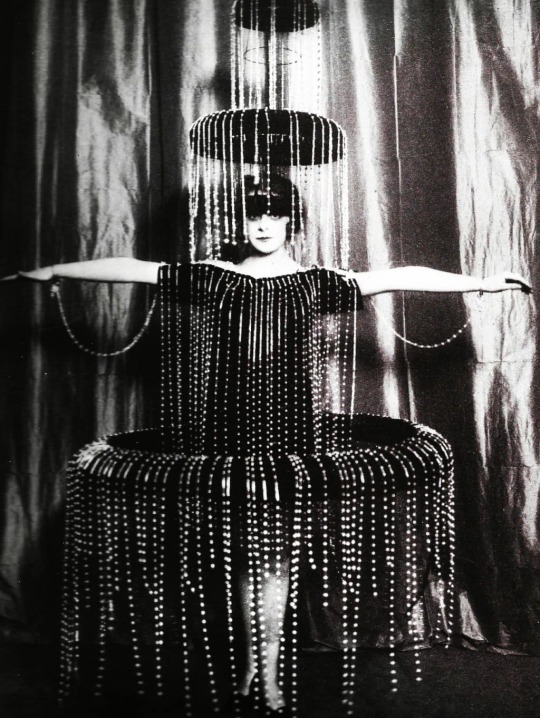

THE MARCHESA CASATI
Marchesa Luisa Casati: An inspiringly decadent true tale of a bizarre Italian aristocrat. Pet cheetahs, séances and dresses made from lightbulbs, the heiress, socialite and artist's muse Marchesa Luisa Casati led a life every bit as unusual as her outfits.
Luisa, Marchesa Casati Stampa di Soncino (born Luisa Adele Rosa Maria Amman; 23 January 1881 – 1 June 1957), was an Italian heiress, muse, and patroness of the arts in early 20th-century Europe.
Casati was known for her eccentricities that delighted European society for nearly three decades. The beautiful and extravagant hostess to the Ballets Russes was something of a legend among her contemporaries. She astonished society by parading with a pair of leashed cheetahs and wearing live snakes as jewellery.
She captivated artists and literary figures such as Robert de Montesquiou, Romain de Tirtoff (Erté), Jean Cocteau, and Cecil Beaton.[citation needed] She had a long-term affair with the author Gabriele d'Annunzio, who is said to have based on her the character of Isabella Inghirami in Forse che si forse che no (Maybe yes, maybe no) (1910).[citation needed] The character of La Casinelle, who appeared in two novels by Michel Georges-Michel, Dans la fete de Venise (1922) and Nouvelle Riviera (1924), was also inspired by her.
In 1910, Casati took up residence at the Palazzo Venier dei Leoni, on Grand Canal in Venice, owning it until circa 1924. In 1949, Peggy Guggenheim purchased the Palazzo from the heirs of Viscountess Castlerosse and made it her home for the following thirty years. Today it is the Peggy Guggenheim Collection, a modern art museum on the Grand Canal in the Dorsoduro sestiere of Venice, Italy.
Casati's soirées there would become legendary. Casati collected a menagerie of exotic animals, and patronized fashion designers such as Fortuny and Poiret. From 1919 to 1920 she lived at Villa San Michele in Capri, the tenant of the unwilling Axel Munthe. Her time on the Italian island, tolerant home to a wide collection of artists, gay men, and lesbians in exile, was described by British author Compton Mackenzie in his diaries.
Numerous portraits were painted and sculpted by artists as various as Giovanni Boldini, Paolo Troubetzkoy, Adolph de Meyer, Romaine Brooks (with whom she had an affair), Kees van Dongen, and Man Ray; many of them she paid for, as a wish to "commission her own immortality".[citation needed][citation needed] She was muse to Italian Futurists such as F. T. Marinetti (who regarded her as a Futurist) Fortunato Depero, Giacomo Balla (who created the portrait-sculpture Marchesa Casati with Moving Eyes), and Umberto Boccioni. Augustus John's portrait of her is one of the most popular paintings at the Art Gallery of Ontario; Jack Kerouac wrote poems about it and Robert Fulford was impressed by it as a schoolboy.
10 notes
·
View notes
Text

art | Jean Cocteau retrospective at Cinemateque Bercy (November 15 - 26)
To mark the 60th anniversary of his death, there is a launch of tribute to Jean Cocteau at Parisian Cinemateque . Poet, then poet-filmmaker, preferred to call himself a cabinetmaker, who shot films like others turn tables. The first magic trick, The Blood of a Poet, will be followed by seven other films, including Beauty and the Beast and Orpheus, all to be seen again on the big screen. A retrospective completed by his work as a screenwriter (The Phantom Baron) and dialogue writer (Les Dames du bois de Boulogne), less often celebrated, no less astonishing.
With the support of CHANEL
Nov 23, 6:00 p.m.
The Princess of Cleves, session presented by Marina Vlady
Based on the novel La Princesse de Clèves by Madame de La Fayette.
With Marina Vlady, Jean Marais, Jean-François Poron.
Against a backdrop of intrigues at the court of the Valois, the amorous torments of a princess (Marina Vlady), who unleashes her husband's jealousy: some 20 years after L'Eternal Return, the Cocteau/Marais/Delannoy trio reforms around the romantic drama by Madame de La Fayette.
2 notes
·
View notes
Text
Italian Cinema
Two Women 1960
(Sophia Loren won an Academy Award for her role as a single mother trying to protect her daughter from the horrors of war in WWII)
Rome, Open City 1945
(neorealist war drama film directed by Roberto Rossellini written by Fellini starring Anna Magnani)
Down with Misery 1945
(Anna Magnani stars as a Roman housewife post-WWII pressuring her husband to join the black Mamarket to pull them out of poverty
Before Him All Rome Trembled 1945
(Anna Magnani and her partner are a pair of opera singers, who moonlight working for the Italian resistance at the time of the German occupation of Rome. Stylistically, the film is a hybrid between filmed performances of opera, and a neorealistic resistance melodrama)
Angelina 1947
Anna Magnani picture, in the public domain
L'Amore 1948
(anthology film directed by Roberto Rossellini starring Anna Magnani and Federico Fellini. It consists of two parts, The Human Voice based on Jean Cocteau's 1929 play of the same title, and The Miracle, based on Ramón del Valle-Inclán's 1904 novel Flor de santidad. The second part was banned in the United States until it was cleared in 1952 by the Supreme Court's decision upholding the right to freedom of speech.)
The Street Has Many Dreams 1948
(Comedy Starring Anna Magnani)
Volcano 1950
(Anna Magnani's revenge film against Roberto Rossellini who was filming Stromboli with Ingrid Bergman on a nearby island at the time. The film plot involves a former prostitute, Maddalena Natoli (played by Magnani), who was exiled to the island of her birth by the police. There, she suffers ostracism by the islanders, and she tries to defend the virtue of her younger sister from the advances of a deep-sea diver. )
Stromboli 1950
(Drama directed by Roberto Rossellini starring Ingrid Bergman considered a classic example of Italian neorealism. Immigrant Lithuanian woman gets isolated in an abusive relationship with a man on a secluded island where locals shun her)
The Golden Coach 1952
(Starring Anna Magnani tells the story of a commedia dell'arte troupe in 18th-century Peru)
The Rose Tattoo 1955
(Starring Anna Magnani based off a Tennessee Williams play)
The Awakening 1956
(Comedy drama starring Anna Magnoni as a nun in a Convent in Naples)
Nella città l'inferno 1959
(When the wide-eyed Lina (Giulietta Masina) lands in a women's prison, she meets a world-weary prostitute named Egle (Anna Magnani) who looks out for her. After Egle teaches Lina what she knows and begins to harden the girl, Lina commits another crime on the outside and winds up back in jail, a shell of her former self. Egle, meanwhile, who had taken a genuine liking to Lina, has tried to better herself and is shocked to see what has become of her former protégé)
The Passionate Thief 1960
(Comedy Two friends (Toto and Magnani) live by their wits working as comedians and cabaret at Cinecittà, before being invited to friends' parties or masked balls during New Year's Eve in Rome. The two, however, even though they make people laugh all the time in public, live an inner conflict, namely that the two have always to be aware to give a smile to someone, but they can never be rich and happy because they are street artists and with a precarious wage.)
Mamma Roma 1962
(Anna Magnani play a single mother retired prostitute trying to build a better life for her teenage son)
Made in Italy 1965
(Comedy anthology with Anna Magnani)
Two Nights with Cleopatra 1954
(Comedy Starring Sophia Loren playing two roles in Prince and Pauper Cleopatra tale)
Aida 1953
(Sophia Loren stars as Aida adapted by the opera by Giuseppe Verdi set in ancient Egypt)
A Slice of Life 1954
(Anthology comedy with Sophia Loren in one of the episodes)
A Day in Court 1954
(Anthology courtroom drama comedy, Sophia Loren is in one of the episodes)
Poverty and Nobility 1954
(Adapted from 19th century play of the same name, with Sophia Loren)
The Gold of Naples 1954
(Anthology drama one episode features Sophia Loren)
The Sign of Venus 1955
(Comedy revolves around an attractive woman named Agnese (Sophia Loren) who has many suitors. She lives with her cousin Cesira, who has the opposite problem with men- a poet in need of money and a man who deals in stolen cars)
Bianco, rosso e... (The Sin) 1972
(Comedy Starring Sophia Loren as a sexy nun?)
4 notes
·
View notes
Photo
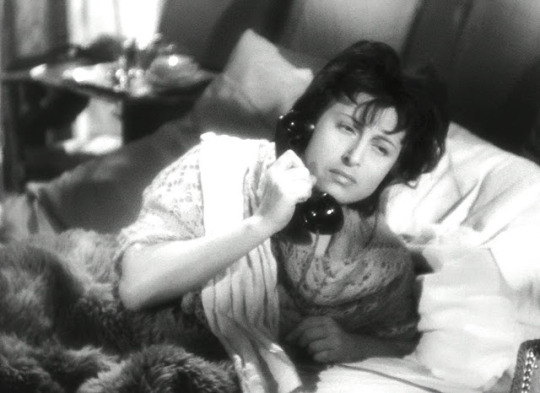

Anna Magnani in the "Una Voce Umana" segment of L'Amore
Federico Fellini and Anna Magnani in the "Il Miracolo" segment of L'Amore
L'Amore (Roberto Rossellini, 1948)
Una Voce Umana
Cast: Anna Magnani. Screenplay: Roberto Rossellini, Anna Benevuti, based on a play by Jean Cocteau. Cinematography: Robert Juillard, Otello Martelli. Production design: Christian Bérard. Film editing: Eraldo Da Roma. Music: Renzo Rossellini
Il Miracolo
Cast: Anna Magnani, Federico Fellini, Peparuolo, Amelia Robert. Screenplay: Roberto Rossellini, Federico Fellini, based on a novel by Ramón del Valle-Inclán. Cinematography: Aldo Tonti. Art direction: Christian Bérard. Film editing: Eraldo Da Roma. Music: Renzo Rossellini.
Roberto Rossellini's L'Amore, designed as a tribute to Anna Magnani, comprises two short films, Una Voce Umana and Il Miracolo. The first is based on Jean Cocteau's monodrama La Voix Humaine and its cast consists entirely of Magnani as a woman whose lover is not only breaking up with her but also going off to marry another woman. In a long telephone call she pleads with and rages at him. In Il Miracolo, Magnani is Nannina, a simple-minded woman who, while herding goats in the hills above her village, encounters a hiker whom she takes to be St. Joseph. He gets her drunk and leaves her pregnant. (The hiker is played by 28-year-old Federico Fellini, who doesn't speak a word in one of his few on-screen appearances.) When Nannina learns that she's having a child she takes it to be a miracle from God, but the townspeople, who already treat her as the village idiot, torment her so much that she flees into the hills, where she gives birth in what seems to be an abandoned monastery. In one of the landmark moments in the decline of film censorship, the Catholic National Legion of Decency charged Il Miracolo with sacrilege and persuaded the New York state film censors to pull it from release. The lawsuit brought by the American distributor, Joseph Burstyn, went all the way to the U.S. Supreme Court, which in 1952 ruled that the ban was an unconstitutional restriction on freedom of speech. Magnani's performance is fuller and more varied in Il Miracolo than in Una Voce Umana, in which she gives a lacerating performance that feels more theatrical than cinematic -- her torment becomes monotonous. But both films accomplish what Rossellini set out to do: showcase Magnani's intense commitment to her art.
12 notes
·
View notes
Text
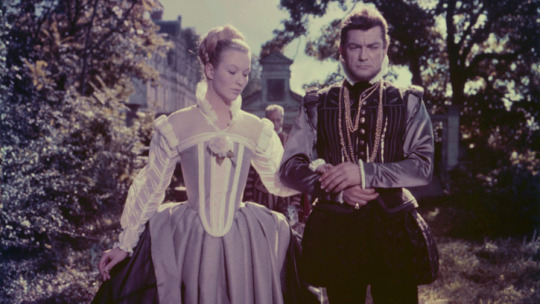
art | Jean Cocteau retrospective at Cinemateque Bercy
To mark the 60th anniversary of his death, there is a launch of tribute to Jean Cocteau at Parisian Cinemateque . Poet, then poet-filmmaker, preferred to call himself a cabinetmaker, who shot films like others turn tables. The first magic trick, The Blood of a Poet, will be followed by seven other films, including Beauty and the Beast and Orpheus, all to be seen again on the big screen. A retrospective completed by his work as a screenwriter (The Phantom Baron) and dialogue writer (Les Dames du bois de Boulogne), less often celebrated, no less astonishing.
With the support of CHANEL
Nov 23, 6:00 p.m.
The Princess of Cleves, session presented by Marina Vlady
Based on the novel La Princesse de Clèves by Madame de La Fayette.
With Marina Vlady, Jean Marais, Jean-François Poron.
Against a backdrop of intrigues at the court of the Valois, the amorous torments of a princess (Marina Vlady), who unleashes her husband’s jealousy: some 20 years after L'Eternal Return, the Cocteau/Marais/Delannoy trio reforms around the romantic drama by Madame de La Fayette.
0 notes
Photo

298. As Crianças Terríveis (Les enfants terribles, 1950), dir. Jean-Pierre Melville
#cinema#jean-pierre melville#nicole stéphane#edouard dermithe#french cinema#1950s movies#classic movies#black and white movies#drama#based on novel by jean cocteau#brother sister relationship#incestuous relationship#manipulative female#jealousy#shoplifter#insane woman#homosexual subtext#voice over narration#deadly consequence#snowball fight#orphan#car accident#poison#bafta awards nominee#cult director#european cinema#70th anniversary#cinefilos
0 notes
Photo
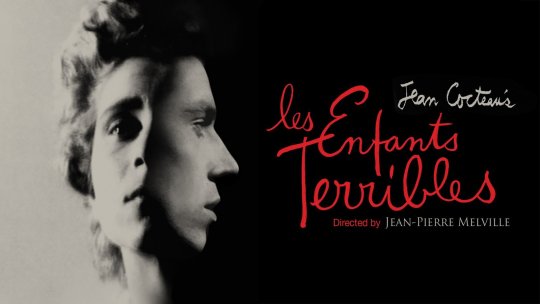
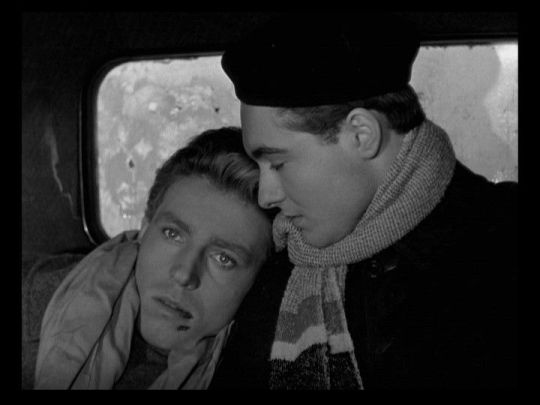






LES ENFANTS TERRIBLES (1950) -- FRENCH FILM DIRECTED BY JEAN-PIERRE MELVILLE AND BASED ON JEAN COCTEAU’S 1929 NOVEL OF THE SAME NAME.
A PROTECTIVE SISTER, ELISABETH, TAKES TO LOOKING AFTER HER TEEN-AGED BROTHER, PAUL, WHEN HE IS SENT HOME FROM SCHOOL AFTER BEING INJURED BY A SNOWBALL. THE SIBLINGS HAVE AN UNWHOLESOMELY CLOSE RELATIONSHIP IN THAT THEY HAVE BECOME INSEPERABLE, EVEN TO THE EXTENT OF SLEEPING IN THE SAME ROOM, AND THEY RARELY LEAVE THE HOUSE. TENSION AND EMOTIONAL CONFLICT COME TO BEAR ON THEIR RELATIONSHIP WHEN ELISABETH BRINGS HOME AN ATTRACTIVE YOUNG WOMAN FROM WORK, AGATHE, WHOM SHE INVITES TO STAY WITH THEM. THE ATTRACTION BETWEEN THE NEWCOMER AND PAUL IS IMMEDIATE; AGATHE REMINDS PAUL OF A BOY HE’S HAD A CRUSH ON AT SCHOOL AND WHO CAUSED HIS INJURY WITH THE SNOWBALL. WHEN ELISABETH DISCOVERS HER BROTHER’S FEELINGS FOR AGATHE SHE SUCCESSFULLY DRIVES A WEDGE BETWEEN THEM THROUGH DEVIOUS MANIPULATION SO AS TO HAVE PAUL ALL TO HERSELF ONCE AGAIN. BUT HER SCHEMING IS FOR NOTHING AS ALL IT DOES IS BRING ABOUT TRAGIC RESULTS BOTH FOR THE LOVELORN YOUNG BROTHER AND CONSEQUENTLY FOR HERSELF. .
Synopsis by Donald B Wilson
7 notes
·
View notes
Text
Incest Rec List
Books (that I have read):
“Flowers in The Attic” by V.C. Andrews (Older!Brother/Younger!Sister; explicit; dub-con). There’s also 3 sequels (”Petals in the Wind”, “If There be Thorns” and “Seeds of Yesterday”) as well as a prequel (”Garden of Shadows”). There’s also a spin off series called “Christopher’s Diaries”, but it was written by another author and goes against pre-established canon.
“Game of Thrones” by George R.R. Martin (Twin!Brother/Twin!Sister; explicit; consensual).
“Tigana” by Guy Gavriel Kay (Younger!Brother/Older!Sister; explicit; consensual). It’s just a plot detail, without much importance.
“The Cement Garden” by Ian McEwan (Older!Brother/Younger!Sister; explicit; consensual).
“Forbidden” by Tabitha Suzuma (Older!Brother/Younger!Sister; explicit; consensual). It’s a romance book and just so happens that our protagonists are siblings. It also has a very sad ending.
“The Thirteenth Tale” by Diane Setterfield ( Older!Brother/Younger!Sister; hinted, but it’s suspected by other characters; slightly dub-con).
“Os Maias” by Eça de Queiros (Younger!Brother/Older!Sister; explicit; consensual). A classic portuguese novel, I’m pretty sure there’s an English translation. The characters are unaware that they are related.
"The God of Small Things" by Arundhati Roy (Twin!Brother/Twin!sister; explicit (iirc), consensual).
“The Mortal Instruments Series” by Cassandra Clare. Oh, this one is complicated to categorize, specially without giving spoilers. But I’ll try: we have one couple that are together unaware that they are related (Older!Brother/Younger!Sister). If you read further, we have one couple that believes to be related by are still attracted to one another (Older!Brother/Younger!Sister). Go further into the series and we have a non-consensual kiss between another Older!Brother/Younger!Sister couple, in which the brother is very attracted to said sister.
“Josie and Jack” by Kelly Braffet (Older!Brother/Younger!Sister; subtext, likely one sided attraction). Fun fact: one of the characters compare Josie and Jack to Chris and Cathy from “Flowers in the Attic”.
“The Fall of the House of Usher” by Edgar Allan Poe (can’t remember who is older, but it’s Brother/Sister, subtext).
“The Secret History” by Donna Tartt (Twin!Brother/Twin!Sister; explicit; consensual).
“The Dreamers” by Aldair Gilbert. (Twin!Brother/Twin!Sister; explicit; consensual). This one is interesting, because originally, it was a book called “The Holy Innocents”, which in turn as based in a French book called “The Holy Terrors (or “Le Enfants Terribles” in French) by Jean Cocteau. I was never able to find the original version to buy, as when the book was adapted into a movie called “The Dreamers”, Aldair decided to re-write the novel and re-publish with the same title of the movie.
Books (that I haven’t read, and therefore can’t offer much detail, if anyone has read, feel free to fill the gaps):
“Ada, or Ardor” by Vladmir Nabokov (brother/sister). It’s by the same author of Lolita, so I can assure you it must be polemic.
“Book of Daniel” by E.L. Doctorow (brother/sister). I think it’s a biblical thing.
“Burying the Shadow” by Storm Constantine (brother/sister).
“Mirror, Mirror” by Gregory Maguire (brother/sister).
“Malika” by Valérie Valère (brother/sister).
“The Mists of Avalon” by Marion Zimmer Bradley (brother/sister).
“Pin” by Andrew Neiderman (brother/sister).
“A Spell of Winter” by Helen Dunmore (brother/sister).
“Wasteland” by Francesca Lia Block (brother/sister).
“The Blue Bedspread” by Raj Kamal Jha (unknown).
“The Holy Terrors” by Jean Cocteau (brother/sister). As mentioned in my comments about “The Dreamers”.
“Watch Your Mouth” by Daniel Handler (unknown).
“Mara and Dann: An Adventure” by Doris Lessing (Younger!Brother/Older!Sister).
“Moon Tiger” by Penelope Lively (unknown).
“The Hotel New Hampshire” by John Irving (unknown).
“Love’s Forbidden Flower” by Diane Rinella (brother/sister). Has a sequel, “Time’s Forbidden Flower”.
“Flawed” by Kate Avelynn (brother/sister).
I would like to notice that most of the books in this list are difficult to find (at least if you live outside of the U.S.) and can be expensive since most of them you will have to buy from the U.S. and have them delivered to your house. There’s many more books, I’m sure. This is only the ones I have heard of.
Movies/TV-Shows:
“Flesh and Bone”. 2015; One Season. At Starz. (Older!Brother/Younger!Sister; explicit; dub-con). It’s like Black Swan, but instead of lesbians, it’s about incest.
“Merlin”. 2008; Five Seasons. At BCC. (Half-Brother/Half-Sister, not sure who’s older). The characters are unaware of their status as siblings, but there’s a build up for their relationship before it’s dropped in Season Two.
“The Borgias”. 2011, Three Seasons. At Showtime. (Older!Brother/Younger!Sister; explicit; consensual). Based in the historical Borgia family.
“Consent”. 2010, 1h 27 min. (Brother/Sister). Haven’t seen yet to be able to say details, but I’m pretty sure it’s explicit.
“Shame”. 2011, 1h 41 min. (Brother/Sister; hinted, subtext).
Also, many of the recommended books have an movie adaptation, so be sure to check them out (especially “The Dreamers”, because the movie is wonderful).
——–
That’s a great list, thanks for submitting :) I’ve heard others mention Forbidden too. @thecloserkin also has a great review on Under the Pendulum Sun, which contains canon incest, and I really have been meaning to get further in it, I’m just awful at paying attention.
154 notes
·
View notes
Text
In 1923 René Clair asks writers and artists their opinion about "seventh art" and Louis Aragon replies: "I like films in which there is no philosophy or poetry. Poetry isn’t something you look for, it’s something you find."
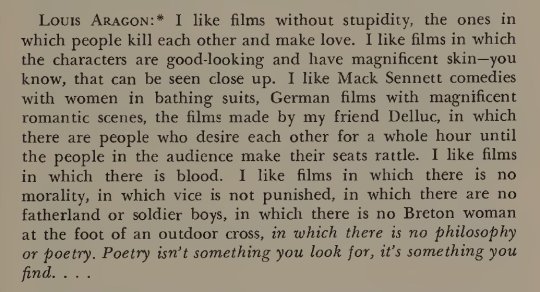
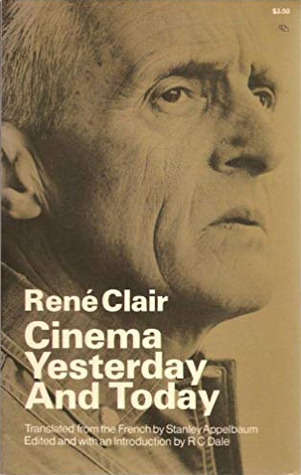
Poet and puppet artist Pierre Albert-Birot: "The work of art begins where imitation ends. I remember the first film comedies very dimly. It seems to me that they were really creative and, what is more, dynamic, truly born of the new medium of expression put at man’s disposal."

Poet, novelist, and filmmaker Jean Cocteau: "On the first day, since people were dazzled by the invention (of cinema), the mistake began. They photographed stage plays. Gradually these plays became cinematic plays, but never pure cinema. Such progress can only be disastrous."

Fernand Léger: "In the future, I hope for this: A cinematic concept that finds its own methods. As long as the film is based on fiction or the theater, it will be nothing. As long as it uses stage actors, it will be nothing."
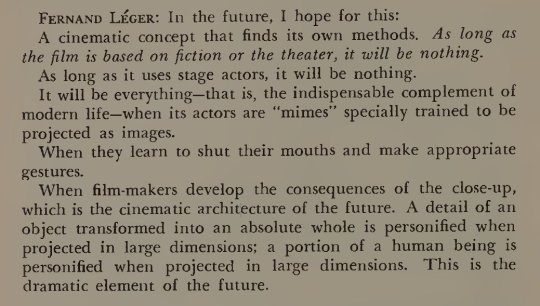
Pierre Mac Orlan: "Cinema is the only art that can render our era literally in expressionist form, with all its secret rhythms which music has already grasped, but which the art of writing cannot render because language imposes a rigid framework that cannot be dislocated."

Another impressive answer from Paul Valéry: "I think that there is a need to institute an art of pure cinema, or cinema reduced to its own means. This art should steer clear of those—theater or novel—that deal in speech."

#Louis Aragon#René Clair#Pierre Albert-Birot#Paul Valéry#Pierre Mac Orlan#Fernand Léger#Jean Cocteau#Film#Cinema#Kino#Art#film theory#Art history#Kunst#seventh art
6 notes
·
View notes
Text
French Perspective on American Film - Social Qualities

Social trades fill an assortment of needs. They can be utilized to connect political partitions, increment the comprehension of another country, or give a fare market to items and administrations. At the point when one culture's mastery of a specific medium exists, their might be doubt and hatred when it is traded to different pieces of the world.
In the US, the creation of movies is viewed as an industry. In this view, Los Angeles is a processing plant town that produces films, network shows, and melodic accounts similarly that Gary, Indiana produces steel and refines oil. In different pieces of the world, be that as it may, the creation of movies is viewed as a work of art similar as composing a novel or verse. No place is this social gap more obvious than the thought of film in the US and France.
The French perspective on American film is very much communicated by film maker Marin Karmitz. Karmitz has expressed that, "the U.S. film industry is enormous business, however behind the modern angle, there is likewise a philosophical one. Sound and pictures have consistently been utilized for promulgation, and the genuine fight right now is over who will be permitted to control the world's pictures, thus sell a specific way of life, a specific culture, certain items, and certain thoughts" (Francesco 441). Is French culture undermined by the importation of American movies and amusement? A nearer assessment of the two contending societies, and the job of the film in each, is significant in discovering the appropriate response.
American and French Film
The Part of the Film in France
The Clash of France and the subsequent German triumph in 1940 prompted a period of extreme interior assessment of French culture as a methods for discovering an answer, and fixing fault, for the loss. No place is this preferred represented over on account of the 1937 film "Le Grande Deception" (which was restricted by the French Government in 1939). Jean Renior's film was perhaps the most mainstream French movies of the interwar years and was the climax of a progression of against war films that started with Gance's "J' Blame" in 1919. The "Excellent Dream" is that war addresses anything (Jackson 148). After the loss, this film, alongside books by Proust and Cocteau, were reprimanded for making a conservative culture in France that prompted the loss. Marin Karmitz's remarks about the force of film cited above, in this manner, are all around grounded in French history and culture.
The Movie Business in America
Rather than unfamiliar producers, the American entertainment world perspectives its items as a ware. The item is to make a film, showcase and appropriate it, and procure the benefits (Francesco 442). While "Slaughterhouse Five" and "One Flew over the Cuckoos' Home" are instances of American producers creating insightful, philosophical pictures, these are special cases instead of the standard. Most American movies are created only for amusement esteem and, simultaneously, do well monetarily both in the U.S. what's more, abroad.
Differentiating French and American Culture
As expressed in the content, "authoritative and public societies impact hierarchical conduct" (Francesco 13). A comprehension of the varying perspectives on media outlets between the US and France must be shown up at by an assessment of their societies.
Hofstede's Elements of Social Qualities
Hofstede's Components of Social Qualities gives a helpful device in analyzing the varying societies in France and US. In view of his investigation of more than 100,000 IBM workers across the world, Hofstede verified that there are measurements to clarify contrasting societies: independence/community, power distance, vulnerability evasion, and manly female.
Independence/Cooperation
In independent social orders, individuals are more worried about themselves and their families than with others. Mirroring this, associations endeavor to respect the individual and base advancement and remuneration on singular exertion. This remains constant in any event, when people are essential for a group.
In collectivist nations, the general great of the gathering is foremost. This holds particularly obvious in the previous Soviet Association and its satellites in spite of their transformation to unrestricted economy economies. The assumption in these social orders is that people will subordinate their objectives to benefit the gathering.
Under Hofstede's examination, both the US and France are maverick social orders. In the two nations, singular drive is significant and remunerated. Applying this examination to the entertainment world, it is not difficult to see that films in the two nations are basically recognized by their lead entertainers and makers.
Force Distance
Force distance is characterized as the level to which less amazing individuals from an association acknowledge that force is unevenly conveyed.
A little force distance society is awkward with power distances. These distances might be founded on monetary riches, training, or hierarchical positioning. It is viewed as certain conduct for somebody in a significant level situation to treat somebody at a lower level as an equivalent. Associations in little force distance social orders will in general have more interest at all levels in the dynamic cycle.
In an enormous force distance society, a person's cultural or hierarchical level impacts their conduct and the conduct of others toward them. While people in a higher authoritative or cultural position approach others with deference, the distinctions in position are clear and never completely neglected. In huge force social orders, choices are made by pioneers with almost no contribution from those beneath them on the progressive stepping stool. Appointment of dynamic is infrequently done.
While the U.S. is a little force distance society in Hofstede's investigation, France conversely is a huge force distance society. This reality was ridiculed in a 1941 political animation. In the animation "two dazed French workers are being told by an educated person: 'How might you be astounded [about the defeat]? You glutted yourselves on crafted by Proust, Gide, and Cocteau.' Every one of these journalists partook in like manner the way that they are gay" (Jackson 4). In addition to the fact that this cartoons depict the goals of the elites, it likewise brings up again the significance of human expressions in influencing French general assessment.
American associations in principle, if not generally practically speaking, esteem the contribution of people paying little heed to their cultural or hierarchical position. Quite a while prior, Sperry Rand Enterprise ran a promoting effort dependent on tuning in. In its commercials, it depicted a leader toward the day's end examining the organization with a more seasoned individual from the support office. The message Sperry Rand attempted to pass on was that its leaders were available to thoughts paying little heed to their source.
Vulnerability Evasion
Vulnerability evasion characterizes the favored measure of design in a general public. This design may include common laws or exacting behavior of conduct at the one limit, and the acknowledgment of a wide scope of practices at the other.
In a solid vulnerability evasion society, individuals lean toward structure and unequivocal standards of conduct. As is valid in numerous enormous force distance social orders, there is a solid regard for specialists. The danger evasion conduct found in these societies can prompt a lack of new plug adventures and a craving among chiefs to stay utilized by a similar association for an extensive stretch of time.
Conversely, feeble vulnerability evasion social orders favor unstructured circumstances, overwhelming inclinations of individual certainty, and enterprising conduct.
French society is set apart by solid vulnerability evasion. This might be clarified partially by the excruciating encounters of two universal conflicts in the twentieth century and may clarify its disposition toward human expressions. In a general public where specialists and savvy people are regarded due to their social status, high worth is put on human expressions and the security of local culture.
American culture interestingly is set apart by powerless vulnerability evasion. The pioneering idea of the American film industry is highlighted by two realities. The first is that the early film pioneers in California didn't move toward the West Coast for its bounty of daylight, however to be liberated from Thomas Edison's legal advisors who were requesting eminences for the utilization of Edison's innovation. Furthermore, a considerable lot of California's initial studios were established by Jewish finance managers from the East Coast, who as a result of bias, were obstructed from seeking after customary vocations in banking and enormous business.
Manly/Female
In manly social orders, achievement, confidence, and contest are compensated. In ladylike societies, individual connections, care for other people, and personal satisfaction are profoundly esteemed. Hofstede characterizes American culture as manly and French society as feminine.There are a few different ways to see the movie and media outlets in this light. From one perspective, American movies will in general be activity situated with a self-assured and fruitful legend or courageous woman. Simultaneously, American studios were established by daring people who were remunerated monetarily for their endeavors. find more information international movies streaming
French movies interestingly will in general be insightful and less activity situated. As "Le Grande Hallucination" shows, French movies are frequently clearly political in nature.
End
French and American movies are extraordinary. In like manner, the disposition of French and American producers toward their industry's part in the public arena is unique. Hofstede's Elements of Social Qualities furnishes a structure with which to investigate these distinctions. French society can be described as individualistic, enormous force distance, solid vulnerability avoidant, and female. Conversely, American culture is described as individualistic, little force distance, frail vulnerability avoidant, and manly.
At the point when see through the viewpoint of culture, it isn't hard to comprehend
#Nigerian movies#Lewabo movies#Christian movie website#watch Christian movies online#international movies online
1 note
·
View note
Video
youtube
(via Philip Glass/Joe Hisaishi: Les Enfants Terribles - YouTube)
Now those are two names you don’t often see together... but I’m not surprised. There’s a minimal simplicity to Hisaishi’s style that goes well with Glass’s.
Anyway, here’s his arrangement of a suite from Glass’s chamber opera for 3 pianos and voices based on a novel and film by Jean Cocteau [part of his other Opera Trilogy] Les Enfants Terribles.
13 notes
·
View notes
Photo
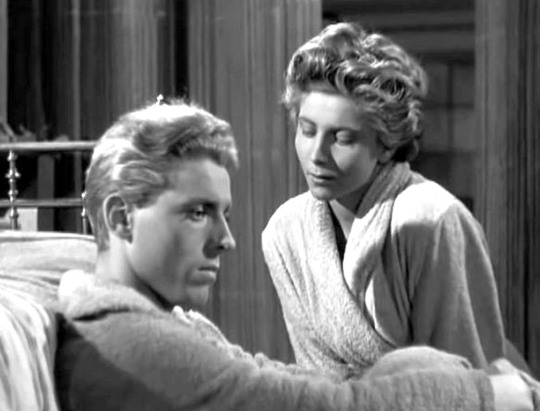
Édouard Dermithe and Nicole Stéphane in Les Enfants Terribles (Jean-Pierre Melville, 1950)
Cast: Nicole Stéphane, Édouard Dermithe, Renée Cosima, Jacques Bernard, Melvyn Martin, Maria Cyliakus, Jean-Marie Robain, Maurice Revel. Screenplay: Jean Cocteau, based on his novel. Cinematography: Henri Decaë. Production design: Emile Mathys, Jean-Pierre Melville. Film editing: Monique Bonnot. Costume design: Christian Dior.
Les Enfants Terribles was released in the United States as The Strange Ones, which has the effect of reducing monstrosity to mere nonconformity. For the siblings Elisabeth (Nicole Stéphane) and Paul (Édouard Dermithe) are monsters, even if they are perhaps more destructive to each other than they are to other people. Not that Jean Cocteau, who adapted the screenplay from his own novel, had anything against monsters: He created the most memorable non-animated version of Beauty and the Beast (1946), after all. Les Enfants Terribles was an uneasy collaboration between Cocteau and director Jean-Pierre Melville; being no slouch as a director himself, Cocteau was capable of imposing his ideas on Melville, who was almost 30 years younger. But somehow they prevailed and produced a film that is either a "masterpiece," as David Thomson calls it, or "pretentious poppycock," as Bosley Crowther, the New York Times critic, called it. I trust Thomson's judgments far more than those of Crowther, a notorious fuddy-duddy, but I prefer to think of the film as not "either/or" but instead "both/and." It's certainly not poppycock in any case, especially in its depiction of adolescence as a kind of fever dream, and the way incest flickers around the relationship of Paul and Elisabeth like heat lightning. But there is certainly a whiff of pretentiousness in the voiceover narration (by Cocteau himself) that hammers home the folie à deux of the siblings, which is apparent without any comment. If it's a masterpiece, which I'm not entirely confident in calling it, it becomes one from Melville's staging, in collaboration with production designer Emile Mathys, Henri Decaë's cinematography, and especially the performance of Stéphane, whose invocation of Lady Macbeth in one scene makes me wish she had played the part on film. Melville didn't want to cast Dermithe, Cocteau's lover, in the role of Paul, and I think he was right. At 25, Dermithe was too old and too sturdy to play the neurasthenic 16-year-old who is felled by a snowball. But Renée Cosima is impressive in the dual role of Dargelos, the schoolboy who throws the snowball, and Agathe, who falls into Elisabeth's clutches as a weapon with which to torment her brother.
4 notes
·
View notes
Text
Bram Stoker’s Dracula and the Seduction of Old School Movie Magic
https://ift.tt/3j6X6Ga
It was one of the most challenging shots in Bram Stoker’s Dracula. Sitting before Roman Coppola’s second unit camera was a 50/50 mirror, the kind that was once commonplace in any illusionist’s magic shop, but which hadn’t seen the inside of a Hollywood studio in decades. On the other end of the glass lay Winona Ryder in bed, ostensibly asleep but soon to be bedeviled by a monstrous vampire.
Yet co-star Gary Oldman wasn’t on hand that day. Instead, at about a 90-degree angle away from Ryder’s boudoir, stood a duplicate set of the same size and shape, but buried in black velvet Duvetyne. And in that blackness, smoke created by dry ice was oozing its way around the velvet. When lit by green lights and reflected in the mirror, a sentient emerald mist suddenly appeared in the same room as Ryder. Dracula manifested out of thin air.
“That was a good one, if I may brag a little, in that it was a backwards photography [shot] with a 50/50 mirror,” Roman says in 2020. It’s been nearly three decades since that day on set at the legendary Culver Studios, and Roman Coppola is a bit older and far more seasoned, yet when he looks back at what he and his team achieved on Bram Stoker’s Dracula, he can’t help but marvel. After all, you could now run a video taken by your iPhone in reverse with the swipe of a finger. But there they were in 1991, “puppeteering” dry ice fog in reverse, so it would appear to be sneaking below a mattress when reflected off a mirror and captured at a 45-degree angle in a camera that was running its film backwards.
In truth it’s more or less the same effect John Henry Pepper invented in 1862 to conjure a ghost on stage. Literal smoke and mirrors in the digital age.
When Bram Stoker’s Dracula opened in November 1992, it astonished the industry and silenced many of Francis Ford Coppola’s sharpest critics. Snarked about in the press beforehand as “Bonfire of the Vampires”—a reference to Brian De Palma’s misbegotten Bonfire of the Vanities (1990)—the whispers were that director Coppola had created a lurid and weird vampire movie based on one of the most oversaturated characters in fiction. Well, Bram Stoker’s Dracula was certainly lurid and weird, but in the best possible way.
Originally conceived as a Victorian man’s repressed anxieties about lust and passion being given demonic shape, Coppola’s vision for Dracula was entirely divorced from the pop culture image of Bela Lugosi in a cape. While the movie was marketed as the director of The Godfather going back to the 1897 source novel that no one had ever faithfully adapted (which turned out to be only partially true), the movie’s true appeal lies in its decadent imagery. It’s a marriage of lavish costumes, freaky makeup, and half-forgotten magician’s effects. And the last bit was given new life by Francis’ son, Roman, who became the film’s visual effects director.
Somehow it all came together, with performers such as Oldman, Anthony Hopkins, Tom Waits, and Ryder going so big that their cries threatened to burst through the soundstage walls. The hypnotic union thrilled audiences, who made Bram Stoker’s Dracula a surprise holiday blockbuster, and was ultimately celebrated by the industry, which awarded the movie three Oscars, including one for Eiko Ishioka’s dazzling costumes and Greg Cannon’s makeup. The irony is that, in its way, it was the industry’s skepticism toward Francis Ford Coppola that made the movie’s unusual vision possible.
“For some reason I always thought it was unfair I had the reputation of being a director who spent a lot of money, which is not really the case,” Francis said in a recent interview with film critic F.X. Feeney. “The only movie that I really spent a lot of money on, and went way over budget, was Apocalypse Now.”
Be that as it may, when Ryder first piqued Coppola’s interest about making a Dracula movie, which as it turned out was a favorite novel from his youth, he knew the studio would never agree to Coppola’s first inclination: As with going to the jungles of the Philippines on Apocalypse Now or Sicily in The Godfather, Coppola initially imagined shooting Dracula in Transylvania and inside actual crumbling castles.
“I knew the studio would be a little leery of getting this director with three names to do this Dracula picture, and possibly go off to Romania, and it’d be a Heaven’s Gate scenario, or Apocalypse Now scenario, so I played into that. I said, ‘You know, we could go and make the film in Romania, we could go to the real Castle Dracula… or I could make it all in the studio… In fact, I’ll make the entire picture right in a soundstage, a group of soundstages right under your noses. They just loved it, they ate it up.”
That was how Francis pitched himself into the movie, but how he made it worthwhile stemmed from two separate ideas bleeding into one otherworldly vision: First that the laws of physics would never apply when you were in the presence of a vampire; and second, if he was going to attempt to authentically return to the Victorian world of Stoker’s 1897 novel, he also would return to the early world of cinema where the laws of physics were never even considered.
“The period of the turn of the century was the birth of movies,” Francis said. “And movies, as you know, largely came about because of magicians who started to use the cinema to make illusions…. That’s when I became excited about the idea of [having] this story 100 percent shot in soundstages and not only using illusions and magic, and effects, but using effects as they were done at the turn of the century, which was in-camera.”
Thus entered Roman Coppola. Only 26 when Bram Stoker’s Dracula went before cameras, Roman wasn’t necessarily his father’s first choice to lead the visual effects. While Francis’ accounts have varied over the years as to whether his first head of special effects quit or was fired, the one consistency in Francis’ telling is that modern effects experts were exasperated by the idea of using almost no optical printers or new digital effects, and instead focusing on in-camera tricks. “Absurd” was the word Francis heard. But as it so happened, his son already had a passion for magic and the old ways, absurd though they may be.
“I was involved [on the movie] already,” Roman says. “I was going to be second unit [director], and we wanted the effects and second unit all to be one group effort, and do that stuff live. And when I started to take certain leadership and do storyboards, and supervise certain preparation, it was just clear that I was able to direct these efforts in a way that was more in my dad’s wishes, which is to really genuinely, deeply embrace the idea of total adhesion to ‘how would they have done it back in the day?’”
In retrospect Roman taking over leadership on the effects in Bram Stoker’s Dracula—to the point where he’s given the title card of “Visual Effects and Second Unit Director” in the end credits—seems natural. Ever since his uncle David Shire introduced him to theatrical magic as a young child, Roman has had a lifelong fascination with the tricks of illusion and sleight of hand. He still recalls boyhood days spent at Los Angeles’ Hollywood Magic store and San Francisco’s House of Magic, learning the trade of visual trickery, such as John Pepper’s “Pepper’s Ghost,” and staying up to watch Paul Michael Glaser in the 1976 TV movie The Great Houdini. In San Francisco, he saw Tony Slydini on stage.
“After 12 and 13, I stopped being so active,” Roman says. “But later, as a younger person in my 20s, I started to get back into it and get a lot of books, and collect certain apparatuses. It’s just something I found a real love for.”
Read more
Culture
The Bleeding Heart of Dracula
By David Crow
It also perfectly positioned him to spearhead Dracula’s visual effects. And one of the first things Roman and his team did was curate a film reel, or “visual library,” of all the points of reference from classic cinema they could use as inspiration.
“The movies that were much more points of reference are a touch later, but still drawing on the same principles,” Roman says when we mention early cinema pioneers, including Georges Méliès. “Jean Cocteau was a particular influence, Beauty and the Beast [1946], Orpheus [1950], and Blood of a Poet [1930]. So those are all movies that we drew a lot of inspiration from.”
Indeed, during the scene where Keanu Reeves’ Jonathan Harker explores Castle Dracula, a single carved arm in the wall is holding a candelabra in homage to Beauty and the Beast. Meanwhile Mario Bava’s Black Sunday (1960) inspired the nightmarish imagery of Harker’s carriage ride through a desolate mountain range, with the ominous passing tree branches actually being grips whacking the carriage as it was rocked in place.
Other films in the reel might include F.W. Murnau’s Nosferatu (1922) or Carl Th. Dreyer’s Vampyr (1932), but Roman cites the biggest influences as being actual books on magic he turned to for research. Some were as old as Stoker’s novel itself. Erik Barnouw’s The Magician and the Cinema (1981) was a major touchstone on the movie; Sam Sharpe, author of Neo Magic (1932) and Conjurers’ Optical Secrets (1985) was another; and then crucially there was Magic: Stage Illusions, Special Effects and Trick Photography, which was written by Albert A. Hopkins in 1897.
Explains Roman, “Those books were the bibles of the research, and those have all sorts of references.” For instance, recall the grandiose prologue of the film. With baroque glee the movie begins not in 1897 but 1462. That is the year the real-life Vlad the Impaler repelled the Ottoman Empire and protected Christendom by slaughtering thousands of Turks. The sequence was Francis’ invention, and one he called his “Origin of Batman” scene on the set. But rather than actually film a battle scene, or even actual daylight, the warring portion of the sequence is completely captured via unnatural silhouette, with shadow puppets before a blood-red sky standing in for actual humans as they are impaled on a forest of pikes.
Says Roman, “If you get the book of Hopkins’ Magic, you will see other things like shadowgraphy, which is using shadow puppets. There was a guy named Caran d’Ache, who I think became famous because he’s the namesake of the Swiss colored pencil company. But he was the originator, or at least excelled in, shadowgraphy. And when you see the opening of Dracula, all those shadow puppets, that was inspired by an example from that book.”
This focus on the classical principles of stagecraft and magic, reverse photography and compositing images with a forced perspective, is the secret of Bram Stoker’s Dracula’s lingering appeal. As Roman points out, there were no effects they feared wouldn’t work. If they could achieve how things were done then, they’d appear inexplicable in the dawning age of digital effects.
“There’s a lot of steps and a lot of process that can be painstaking, but I don’t think we did anything that was pushing a boundary,” he says. “I think everything was an accepted principle that we knew, ‘Well, this is going to work if we do it right.’ There was nothing groundbreaking. We adhered to all the old tricks.”
There could certainly be setbacks, Roman recalls during Dracula’s voyage to London on the doomed Demeter that they exposed the same negative to five passes of filming. This is to say they attempted to combine five separately filmed images as the camera swung on the set by rewinding the film before each new pass. But because the frame line was incorrect on one of the passes, the whole multi-step take was ruined.
But the effects they did achieve all have a potency that register as alien to our modern eye. Some can be as simple as running the film backward in the camera, giving a macabre, unnatural sense of movement as Sadie Frost’s newly turned vampire Lucy climbs into her coffin after being accosted with a crucifix. In reality, she was filmed simply climbing out of it. Others might be slightly more complex, such as a black matte box being used over multiple passes.
For instance, when rats appear to run upside down on a girder above Jonathan Harker in the castle, two passes were used. In the first, the camera was upside down with the black matte covering the top of the lens as rats ran across a piece of set; then the camera was turned upright, the film rewound, and the other half of the lens was exposed while the original portion was covered as Reeves was burned into the negative.
Read more
TV
BBC/Netflix Dracula’s Behind-the-Scenes Set Secrets
By Louisa Mellor
Among my personal favorites is the extreme perspective of Ryder’s 1462 Princess Elisabeta flinging herself from a castle parapet into a river, which Roman reveals “was basically a puppet with a forced perspective, and a little river below, [with] some tricks to make the scale look correct.”
Another was the much more complex series of techniques used during the vignette of Jonathan Harker traveling by train into Transylvania. In the finished film, Reeves sits in a shadowy train compartment with stark mountains out the window. Soon they fade away into darkness as Oldman’s predatory eyes appear on the horizon. Outside the train, Harker’s journal entry about the day’s travel is visible in the frame, running the length of the train track and just below the crossing transport.
“That was done by Gene Warren Jr. at Fantasy II [Film Effects], and that was multi-pass, multiple exposures,” Roman says. Among them was a rear projection created over two passes on the same piece of film. The first was comprised of multiple layers of the mountain range background moving at different speeds from right to left, while the camera moved left to right. In the second pass, the lights were turned out and Oldman’s eyes, as filmed by Roman, were projected as the only source of light onto the same background. All of this was then rear projected behind Reeves in a separate shot while he sat in his carriage. Conversely, in one of his close-ups, a map of 19th century Transylvania appears on his face via front projection.
And as for the journal in the same frame as the train? According to visual effects camera operator Christopher Lee Warren in “In Camera: The Naive Effects of Dracula,” they built a 20-foot wide replica of Harker’s journal entry so it could stand 10 feet in each direction between the camera and a miniature train, all to get the right type of sunset shadow being cast across its pages.
As just one in a string of intricate effects and set-pieces achieved by Roman and his team, the effects’ cumulative impact is immeasurable. In its way, Bram Stoker’s Dracula works on the level Francis wanted: He was able to bring it closer to Stoker’s world and plot, if not necessarily Stoker’s themes. As Francis more openly admits in recent years, when Ryder first approached him with a draft of James V. Hart’s script for Dracula, it was about a gushing love story between the dashing Count and Mina Murray Harker.
Ironically, that may be the element of the film that lingers most on subsequent pop culture depictions of Dracula. But it was Francis’ insistence on the script being rewritten, and rewritten again, to incorporate all of Stoker’s narrative beats, side characters, and supernatural wickedness, as well as the sense of a British society in upheaval. It was the dawn of a new century, the twilight of an old monarch, and an age for scientific discovery and technology, be it in the realm of blood transfusion… or moviemaking.
Bram Stoker’s Dracula is at its best when it drinks deeply from its dreamlike environment and atmosphere, capturing the base dread in Victorian culture of suddenly being confronted by what it deemed irrational or lascivious. And those elements mingle to gory delight when the aspects Coppola cared about most took center stage.
“The focus [was] on the actors, the costumes, and this unusual way of doing live-action and multiple take effects done in-camera,” Francis said. And when it’s Hopkins, Richard E. Grant, and the rest of the ensemble standing around Sadie Frost in an extravagant 19th century wedding dress while being filmed in reverse, its sense of tone and style is overwhelming.
Read more
TV
Talalay’s Terrors! The Director Breaks Down Her 5 Scariest Scenes
By Kayti Burt
On his end, Roman met that goal, and underlined the movie’s macabre madness, with ideas as primal and orgasmic as firing waves of blood out of air cannons during the scene where Dracula kills Lucy���“That was just a total last minute thing of like… ‘Hey don’t we have a bunch of blood bullets? Let’s put it in those air cannons and see what happens”—and it also paid off in old-fashioned Hollywood bravura, like the climax where Harker and the other vampire hunters chase Dracula down the Borgo Pass.
As second unit director, Roman shot much of that finale—as well as about 20 percent of the finished film—on the same soundstages where Merian C. Cooper filmed King Kong (1933) and David O. Selznick burned Atlanta in Gone with the Wind (1939). And a few years before Jurassic Park changed movie effects forever, Roman and his father were in that space, filming Reeves, Hopkins, and the rest approaching on horseback an enormous looming castle… which was created by Michael Pangrazio and Craig Barron by painting it on matted glass.
“That is remarkable that that would still be done in our time,” Roman reflects. “It’s hard to imagine that will ever happen again, latent image matte painting. It’s a great way to do something, but you need to have the skill to do it… and that’s just sort of a dying art.”
Not that Roman doesn’t still indulge the old ways. Many of his modern collaborators adore miniatures, for example. “I work with Wes Anderson often, and he likes to use miniatures, and he does it pretty liberally,” Roman says. “So I think there’s always a place for that.”
But composite shots? One where you put a sky or castle in the same shot with a miniature and live-action over multiple passes?
“It’s not possible to imagine someone wishing to do that on an optical printer, because for one, they don’t really exist [anymore],” Roman says. “Number two, it degrades the image, and there’s a lot of reason not to.”
Like the in-camera effects that fascinated two generations of Coppolas, even the optical printing techniques they were largely forgoing in 1992 have become obsolete in the age of computer generated imagery. Even the backwards-looking Bram Stoker’s Dracula has a single CG effect, with Roman conceding the transformation at the end of the movie, where demonic Dracula turns back into Prince Vlad in death, was done with CGI. But as Roman says, it was used judiciously at the conclusion as “a real punctuation mark.”
And perhaps Bram Stoker’s Dracula is itself a punctuation mark. A last hurrah for antiquated styles of moviemaking that were long gone, or about to be, and a chance to open a magician’s bag of tricks to fool the eye into believing, as Francis says, “the earth doesn’t rotate at exactly the right speed” in the presence of a vampire. It’s why the movie has aged like fine wine (if you drink the stuff), and likely will continue to do so while many other effects-driven movies are practically timestamped by their imagery.
“It was unique to a time and place,” Roman says. “I’m sure other movies, other horror movies in particular, over time will represent a time and a place, but this seems to be the one that represents that time and place.”
That time, and perhaps that of a century earlier.
cnx.cmd.push(function() { cnx({ playerId: "106e33c0-3911-473c-b599-b1426db57530", }).render("0270c398a82f44f49c23c16122516796"); });
The post Bram Stoker’s Dracula and the Seduction of Old School Movie Magic appeared first on Den of Geek.
from Den of Geek https://ift.tt/3dyAqNP
3 notes
·
View notes
Text
Kaze to Ki no Uta by Keiko Takemiya



When I think of COVER LOVE there are several books that might spring to mind. But I’m not sure if anything is as besotting quite like the life’s work of Keiko Takemiya, a Japanese comic amazingly made a reality from 1976-1984 Kaze to Ki no Uta, or The Poem of the Wind and the Trees. Through its several editions the covers have always evoked a certain sense of atmosphere. I own a bunko edition by Hakusensha since it’s a nice and small set of the girl’s comic series, featuring more photographic covers and the back summary accompanied by colour drawings.
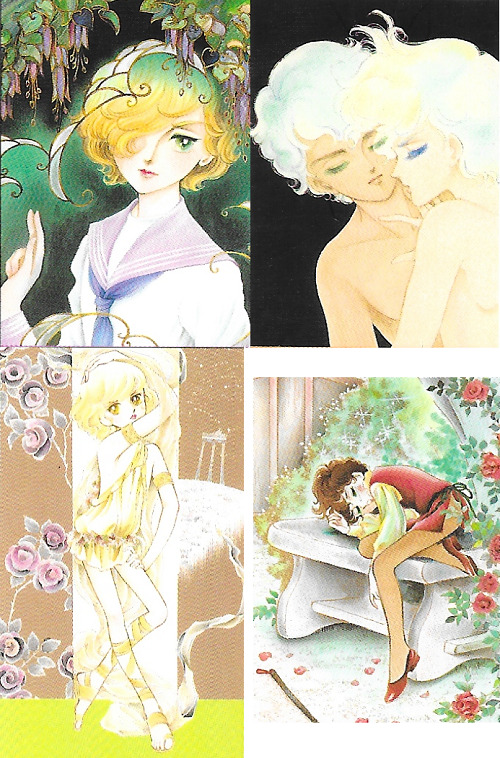

Set in a far-off France of the 19th century past from the first pages, readers know they have been transported and are in for something quite different with a sex scene between two boys at the Lacombrade boarding school near Arles. Going further one will find more of that, as well as racism, homophobia, violence, sexual assault and abuse, child abuse, incest, suicidal behaviour, class issues, drug use and tragedy.
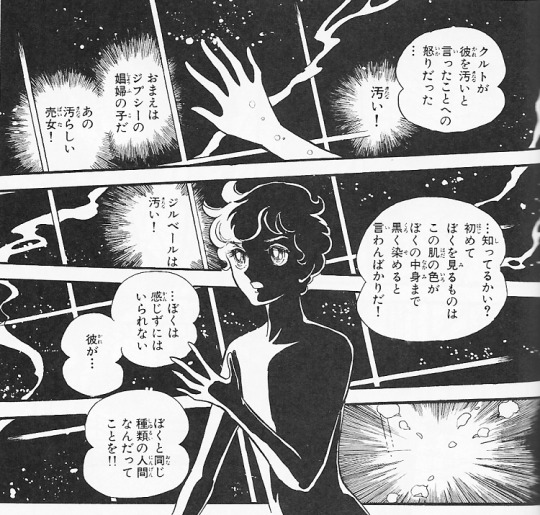
Put simply it’s an opus originally published at 17 volumes and there is a lot to The Poem of the Wind and the Trees, its main characters Gilbert and Serge growing up along with their aristocratic complicated families and associations. The present is connected to the past, the past the present, a theatre showcasing generational cycles. Through thousands of pages covering decades readers get to know these characters and their joys, struggles and failings. I could write far too much about Gilbert’s relative Auguste for example. He’s a headache inducing figure that I often found myself talking into the pages to as if a character in a book could hear me.

A creation from a Japanese woman over forty years ago with a distinguished career the series is an award-winning classic in Japan. Though, that by no means is meant that people all have homogeneous opinions about it. The Poem of the Wind and the Trees presents special challenges because of the controversial nature of some of its elements like paedophilia or, its sexual frankness. Or maybe it’s just simple for some people to say fiction depicting bad things is bad. (Still it’s frustrating and worrying to me to encounter views similar in comparison to how some around Lolita in Western literature degrade it as Nabokov’s sex kitten book. Yet, somehow that even sounds less insensible to how The Poem of the Wind and the Trees can be [mis]interpreted.) It’s encouraging that two teenage boys finding love with each other and struggling in their expression —and it is eroticism as well, an aspect in the story while remaining pertinent today, may be a lesser contentious part comparatively. No matter who you are getting through adolescence probably never gets easy, one reason why unsanitised coming-of-age stories are important.
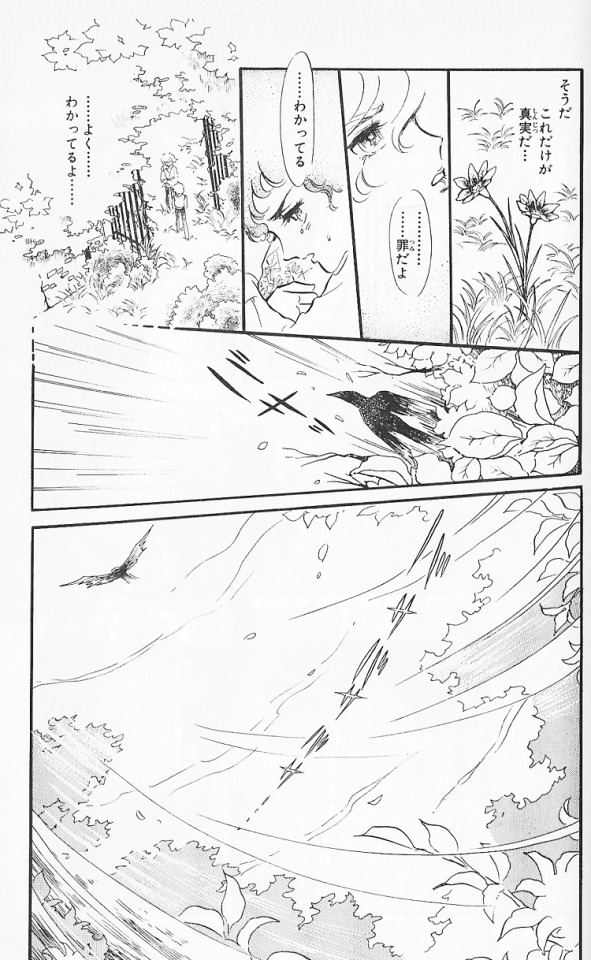
For me The Poem of the Wind and the Trees and Takemiya hold such high status for good reasons. Even all these decades later the composition and themes in the series Takemiya was able to present and fight for doing so still blows my mind. I was not alive in 1976 when it first began publication, so I can only listen to people who were but, it all comes off as damn impressive and shocking then. In fact, it took Takemiya some years to get it published in the first place, finally in the year she turned 26 and then serialised for almost some eight years. At the time artists like Takemiya also drew inspiration and referenced a great variety of classic literature, film and other culture, familiar examples from Europe being work of Alexandre Dumas and his son, Heinrich Heine, Hermann Hesse, Roger Peyrefitte/Jean Delannoy, Jules Verne and Luchino Visconti. (I wonder if Gilbert’s last name might be taken from writer Jean Cocteau too.) The fictional school serving as the main setting for the comic would be familiar as the surname of the lead actor in 1964’s Les amitiés particulières. Some of the students are indeed up to some similar things as the novel the film was based on, though the culture of Lacombrade is more corrupt and much less benign, likewise priests at the very least not being so helpful.

Possibly because I’m fond of such titles, this sort of literary aspect to be found in early shônen ai works is something as the genre evolved to the boys’ love of today, I miss. (Sometimes I experience moments of déjà vu, but It could be I’m just overlooking such styled offerings these days.) I’m also quite partial about stories set in France. Takemiya limited in ways we are not today in researching managed to make her setting rich and detailed complimenting the characters inhabiting it. When Gilbert recalls the resilient motto of Paris, Fluctuat nec mergitur, in the scene below I had to smile.

Something like The Poem of the Wind and the Trees has an aura of only being possible in its time. Takemiya had something to impart and did she show us. (I thought of giving an example of what she does with flowers, but tumblr’s flagging algorithms is silly.)
Perhaps more importantly such a title is still relevant today if people want to process, consider and discuss sensitive topics and the culture around them through fiction. There is much the series can offer its teenage target audience. A true song of adolescence. And here I am as an adult still appreciating and revisiting a decades old comic. Isn’t the best sort of art the kind staying in our memory that we pass on to the next generation and onward after that? Therefore, I hope one day we are at a point that The Poem of the Wind and the Trees will be licensed in English as well. (And French, qu’allez-vous faire?) So that more people can read and discover and likewise debate and have messy conversations over it. I think to not, would be a great loss. I hope to see more thoughtful discussions on it and other classic titles in the future.
Kaze to Ki no Uta by Keiko Takemiya is available in Japanese, the 10-volume release from Hakusensha shown above ISBN# 9784592881513, 9784592881520, 9784592881537, 9784592881544, 9784592881551, 9784592881568, 9784592881575, 9784592881582, 9784592881599, 9784592881605
The series has recently been licensed and translated in both Italy and Spain
Also, the Le poème du vent et des arbres artbook was reprinted in Japan in a revised edition in 2018 ISBN#9784835455921
#1970s comics#shounen ai#the poem of the wind and the trees#kaze to ki no uta#keiko takemiya#風と木の詩#竹宮惠子#english license wishlist
207 notes
·
View notes
Photo

Roberto Rossellini’s Outliers by Stuart Collier
Among cinephiles, Roberto Rossellini carries a reputation not unlike Jean Renoir’s. He is said to have been one of the supreme humanists of cinema, an artist who rarely sought technical perfection but often achieved indelible insights into the human spirit and its soulful struggle against the postwar zeitgeist. Many other contemporary Italian filmmakers drew from the same thematic palette—class, Catholicism, postwar anhedonia—but Rossellini’s films were unique for their lack of linearity and didacticism, instead seeking out dialectical ruptures and open-ended mysteries. And unlike many auteurs, he cycled through aesthetic phases at an alarming rate, never seeming to resist the pull of perpetual reinvention.
And yet, Rossellini himself is almost as indecipherable and contradictory as his films. Lacking the gentle and generous temperament that cemented Renoir’s persona as a warm-hearted humanitarian, Rossellini was something of a playboy with a penchant for fast cars, adulterous affairs and immature fits. His biography never seems to coherently thread pieces together: how could the man who struck so righteously at fascism in ROME, OPEN CITY (’45) have contributed propaganda films to Mussolini’s wartime government?
In addition to the canonical titles of Rossellini that are familiar to Criterion Collection enthusiasts, FilmStruck offers quite a few strange and delectable rarities that highlight Rossellini’s perhaps unmatched flexibility as a filmmaker.
L’AMORE (’48)

An anthology film consisting of only two vignettes, L’AMORE is especially puzzling in that these vignettes lack the connective thread that binds them together—with the exception of its star, Anna Magnani. The first vignette is an adaptation of Jean Cocteau’s play The Human Voice, with Magnani as a woman agonizing over her crumbling relationship with a lover who remains off-screen: she talks to him over the phone, and whatever his thoughts or feelings or wrongs or rights, it is Magnani’s character who remains the focus. The effect is one of agonized and uncomfortable intimacy, and it diverges markedly from Rossellini’s usual earthiness and expansiveness of vision. These qualities come to bear on the second story, “The Miracle,” wherein Magnani plays a deluded religious fanatic who—impregnated by an idling wanderer (Federico Fellini, who co-wrote this and other Rossellini films)— believes that her pregnancy is a miracle from God. Catholic reactionaries were not happy about the story’s perceived sacrilege, but in hindsight, it is difficult to miss the compassion and the sense of climactic, enigmatic rapture that seems, time and again, to mark Rossellini’s treatment of religious themes.
THE MACHINE THAT KILLS BAD PEOPLE (’52)
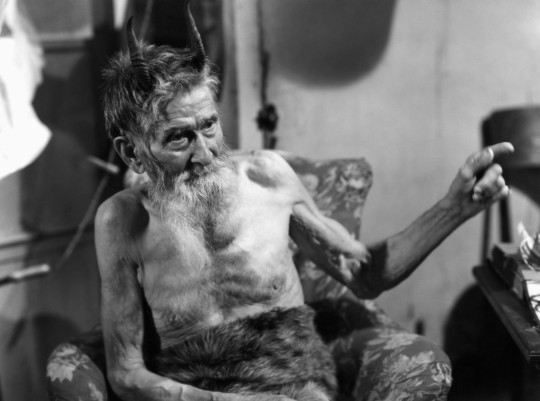
I have always suspected that THE MACHINE THAT KILLS BAD PEOPLE (originally titled La macchina ammazzacattivi) is overlooked not only because it is a comedy, but also because of the crudeness of the title’s English translation. And yet the film itself is inspired. Rossellini aims for a morbid farce of fantastical dimension, in which the devil—in the guise of Saint Andrew—goads a devout Catholic named Celestino into literally exterminate the “bad people” of his community with a hexed camera. It is far-fetched to be sure, but also well within the parameters of a comically enlivened Catholicism and grounded within the social realities of the coastal village of the film’s setting. The life of the village becomes Rossellini’s satirical playground, wherein he depicts the stratification of local politics according to histrionic self-interest. The incessant bickering over the allocation of great sums of money (much of which is conferred by the estates of those whom Celestino has killed) is both a wellspring of hilarity and a serious moral failure all at once.
FEAR (’54)

The films that Rossellini made with Ingrid Bergman are often positioned as a trilogy—STROMBOLI (’50), EUROPA ’51 (’52) and JOURNEY TO ITALY (’54) —despite the fact that he and his then-wife made a total of five features together. Based on the Stefan Zweig novel of the same name, FEAR (’54) may not boast the richness of the aforementioned three films (each of which places Bergman and her residual Hollywood glamor in direct contact with the roughhewn nature of her peasant life in Italy) but this inconspicuous drama is fascinating precisely because it sees Rossellini tackling a more conventional subject matter. Films about forbidden love and emotional blackmail were not uncommon in postwar Italy, but FEAR is unique in that, like GERMANY YEAR ZERO (’48), it channels its themes through the context of postwar reconstruction in Germany. Bergman, playing the wife of an eminent scientist (Mathias Wieman) who attempts to conceal from him that she has fallen for another man (Kurt Kreuger), no longer carries the ideological implications of her stardom—she simply acts the part and does it superbly.
#FilmStruck#Roberto Rossellini#Ingrid Bergman#L'amore#Fear#StreamLine Blog#Stuart Collier#Machine That Kills Bad People#italian neorealism
62 notes
·
View notes